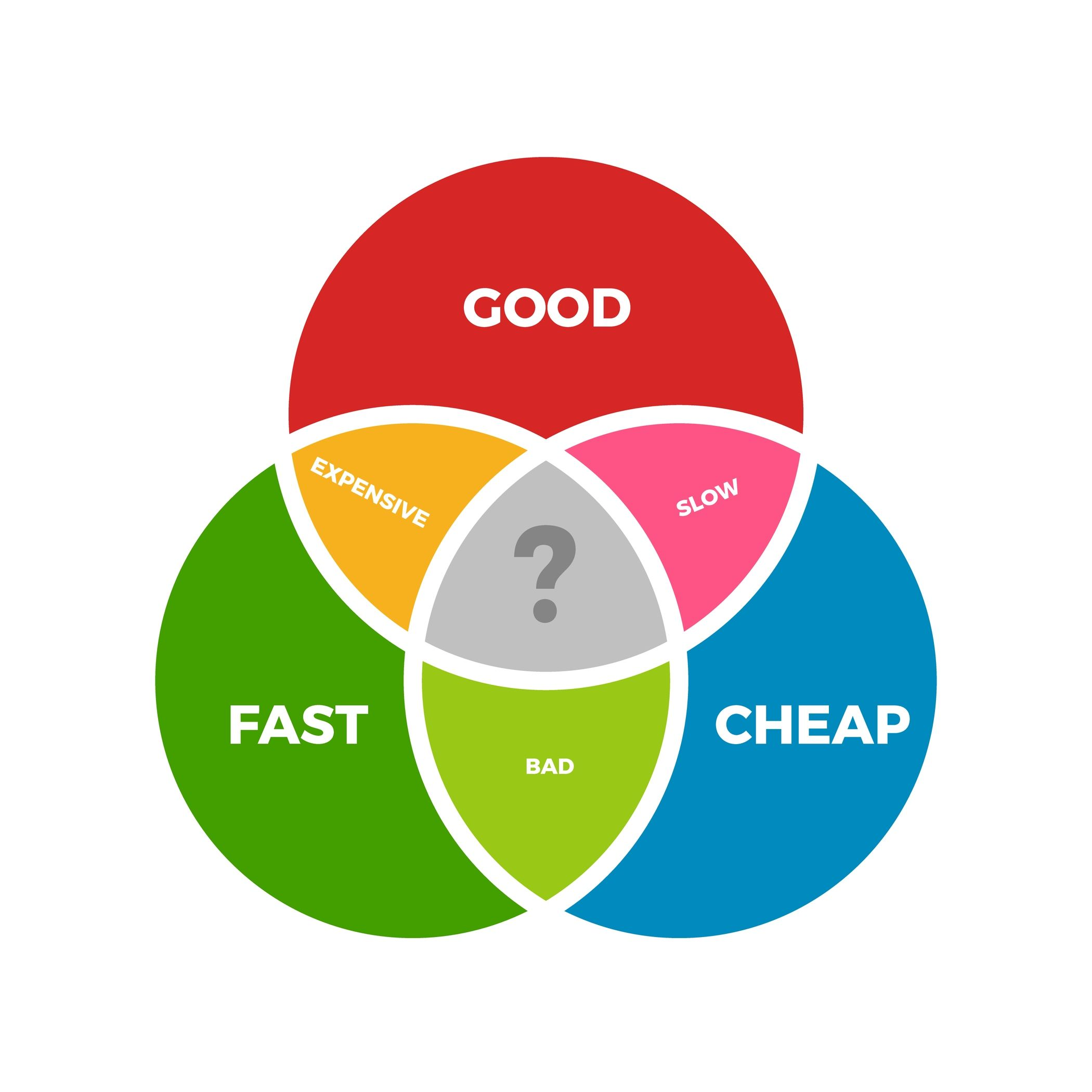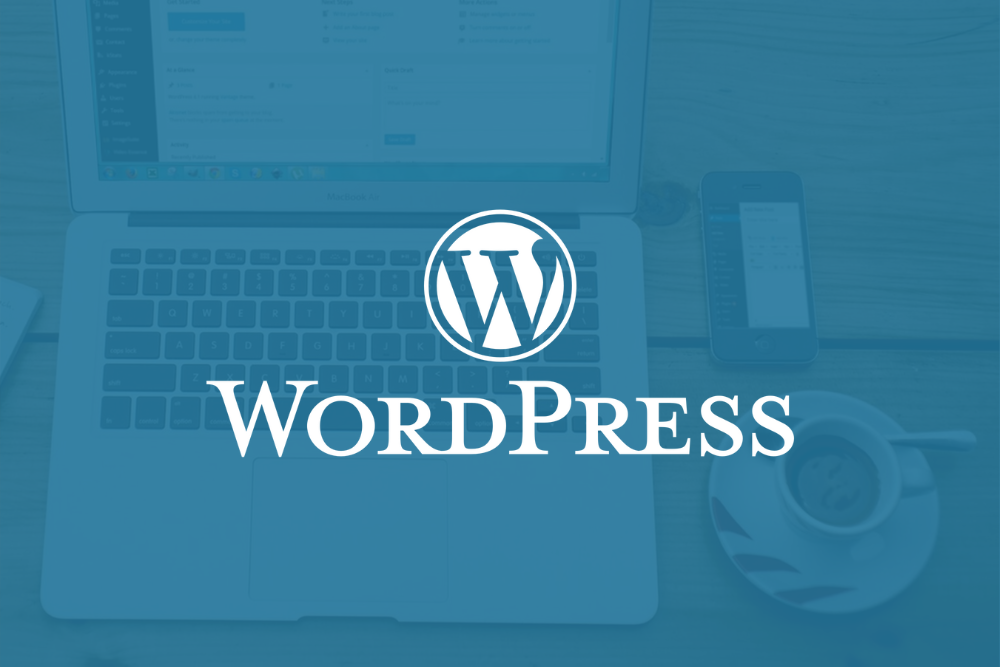In our modern world, every business needs great website design. Most customers begin searching for products and services online, and a well-built website by a website design company is the key to reaching them.
A website shares important company information, presents products and services visually appealingly, and helps drive sales. Gone are the days of poorly designed websites and hard-to-read text.
Many websites today are custom-designed to help businesses attract the right customers and stand out from the crowd. The benefits of custom website design include personalization, speed, scalability, and functionality.
Over the years, we’ve developed a recipe for creating custom websites, starting with quality ingredients.

WEBSITE INGREDIENTS
Every custom website is unique, but we build every website with the same key ingredients. These include website structure, content, copywriting, design, user experience, conversion, and search engine optimization (SEO). You can customize each ingredient or component of a website according to the business’s goals and objectives.
Structure & Layout
A website’s structure or layout is how the individual web pages are designed and connected. There are four types of website structures, but most websites today are built using the hierarchical structure.
The hierarchical model is also known as a tree structure. The parent page provides an overview of the entire website and links to additional pages with more detailed information.
Creating a solid website structure before beginning design or copywriting is key. It’s like building a foundation before putting in the windows and doors.
A strong website structure will provide the following benefits:
- A good user experience. Visitors can easily navigate the website and spend more time on it.
- Increases the likelihood of ranking on Google’s search engine results pages (SERPs). Ranking high in search results will improve click-through rate and build a brand’s reputation.
- Improves crawling. Website crawling is the automated analysis of page content to allow the individual website pages to appear in search results. A website with good internal linking enables crawlers to discover and index relevant pages.
Another thing to consider is multiple pages written about the same topic. When multiple pages on a website compete against each other, they could hurt your Google rankings. Careful planning can help prevent this issue.
Content & Copywriting
Upon completing the website’s structure, it’s time to fill each page with the right content. A website’s copy, or words, is vital in guiding people through the website and sharing valuable information. Every website needs copy that is relevant, accurate, and engaging.
Engage the reader
New businesses or website owners often think they can write the copy themselves to save money. Though every business owner possesses written communication skills, writing website copy is a particular craft. Professional copywriters know how to create sentences and paragraphs that jump off the page and engage the reader.
What’s in it for them
On the other hand, poor copywriting tends to be self-centered. Business owners know all about their products and services and want to tell customers about them. Even if the information is fascinating, customers visiting a website want to know what’s in it for them. A professional copywriter knows how to walk the delicate balance between meeting business goals and pleasing the customer.
Stay focused
Another characteristic of poor copywriting is a lack of focus. You must build every web page for a specific purpose, and the copy should communicate that purpose. If visitors can’t figure out what the page is about within a few seconds, they’ll go to your competitor.
Keep it simple
A similar characteristic of poor copywriting is dense and difficult-to-scan copy. Amateur writers tend to overwrite and overcomplicate copy. Professional copywriters know how to write detailed yet succinct sentences.
Get them to take action
Last but not least, poor copywriting lacks compelling CTAs or call-to-action phrases. Every web page needs to take customers to the next step in the sales process. Otherwise, you’re wasting their time and missing out on sales.
User Experience
User experience (UX) may sound like a luxury add-on for custom website design, but it’s vital. The term refers to what a website visitor sees, hears, and feels when exploring a website. The main factors impacting user experience are usability, usefulness, desirability, credibility, accessibility, and value.
To create an outstanding website experience, a custom website should have the following characteristics:
Functional interface
Interface refers to a website’s design, including fonts, font size, colors, and overall layout. A function interface feels natural and intuitive, making it easy to access information.
Smooth flow
Each website should have a natural flow to the final destination: a contact page, product page, or subscription sign-up. Users shouldn’t struggle to figure out what you’d like them to do.
Easy to use
To make the website easy to use. Have a navigation bar, drop-down menu, a link to the homepage on every page, or a search page.
Credible
If the website asks the user to provide confidential information, such as their address, credit card number, or health information, it must have an SSL certificate. This will help protect sensitive data and build credibility among users. Furthermore, secure sites have a better chance of ranking on Google.
Every website should also have a Privacy Policy, which simply tells visitors and customers what data you collect during their visits and how you use it. Though most users don’t read it, a Privacy Policy adds credibility.
Automated responses
Users who need help finding information about your business or website will appreciate an automated response feature. A chatbot can offer answers to basic questions and refer users to the right place for additional information. In addition, a chatbot can welcome visitors and build trustworthiness.
Human-based interaction
A chatbot should not replace human-based interaction. Provide online forms and contact information for users to reach a person directly.
Conversions
A conversion is a website goal for the user. This could involve purchasing a product, signing up for the email newsletter, submitting a form, or requesting a product demonstration. Each web page should play a role in bringing visitors one step closer to conversion.
Let’s dive a little deeper into the different types of conversions.
Form submission
A form may ask for the website visitor’s first and last name, phone number, email address, or other relevant information. The business may use this submission to invite the user to a seminar, send a newsletter, or provide a quote.
Each form should be short and easy to fill out. Long forms discourage users and may lower the conversion rate.
Purchase
A purchase is the most common type of website conversion. If the business sells products, a product page will have a “Buy Now” or “Add to Cart” button to encourage users to make a purchase.
Sign-up
An email sign-up can be as simple as submitting an email address, while form submissions may require additional information.
Button click
Clicking a button could be the conversion goal. You could have a button inviting users to download a whitepaper, visit a pricing page, or view a product.
Create an account
Some businesses need their visitors to create an account. This will provide them with important information that will be used to personalize the shopping experience.
Share content
If you’d like to grow your audience, asking visitors to share your content could be a practical conversion goal. This conversion will allow you to see what content is resonating with your audience.
Install an app
Some websites are built to promote an app. The final, or only, conversion could be to install an app.
It’s essential to have the proper CTA on each web page. Reach out to Orange Coast Websites to learn more about setting conversion goals during the custom website design process.
Search Engine Optimization
Let’s face it, search engine optimization is a vast topic. It has many elements, rules, and even gray areas. Many business owners haven’t even heard of the term, even though it’s the key to appearing in Google’s search engine results.
No matter how much you know about SEO, there are a few key elements that your custom website should have.
Domain name
A good domain name includes the business’s name, doesn’t contain any hyphens, and is short and memorable. It shouldn’t be stuffed with keywords or location names.
Website Platform
Next, the website should be built on a platform, whether that’s a hosted or self-hosted platform. At Orange Coast Websites, our custom website designers build websites on WordPress because it’s customizable and extensible. Every WordPress website has thousands of ready-to-use plugins that can improve functionality and SEO. That’s one of the reasons WordPress has a market share of 43%, the largest in the world by far.
Yoast SEO
Yoast offers multiple WordPress plugins to help boost a site’s SEO. These include Yoast SEO, Video SEO, Local SEO, News SEO, and WooCommerce SEO plugins. Orange Coast Websites installs and configures the Yoast free version on every website, and depending on website goals, we recommend the premium versions for maximum features and benefits.
Keyword research
Each website needs to rank for specific keywords to reach the right audience. When building a custom website and providing SEO services, our SEO team does keyword and competitor research to identify relevant keywords, check traffic potential, and determine ranking difficulty.
Technical SEO
Technical SEO involves actions that help search engines find, crawl, and index individual web pages. Our custom website design company uses special tools to identify and resolve over 100 SEO issues.
On-page SEO
On-page SEO refers to creating relevant content and optimizing it for the right audience. This is also known as aligning content with search intent. This form of SEO also involves creating a descriptive URL slug; writing a compelling title tag, meta description, and headers; and optimizing images.
Link building
Links from other websites directing visitors to your site show Google that your content is valuable. Link building typically involves creating unique, informative, and engaging content. We caution clients against buying links because most of these links are from low-ranking spammy sites built explicitly for link building.
Furthermore, Google has become quite sophisticated at detecting link farms and penalizing sites that rely on them by significantly reducing their rankings on the search engine results pages. Obtaining links from these sites can hurt a website’s SEO.

WEBSITE preparation
Once our custom website design team has the ingredients ready, we enter the preparation “development process” phase. The development process can take about 30 to 90 days, depending on the complexity of the website and the services agreed upon. For most small businesses, preparation begins with the design phase and ends with go-live. Larger or unique businesses will generally require more preparation, which we consider when scoping out the project.
Mockups, Structure & Layout
We have a collaborative approach to design mockups, structure, and layout, offering clients access to a wealth of features and multiple revisions to deliver precisely what they envision for their website. We also use best practices with the user experience (“UX”).
Design & Development
Our team works with each client in the web design and development process to deliver a simple and engaging website that maximizes conversions. We use the approved design and development best practices to ensure we don’t cut corners, and the end result is a website that you can extend and grow with your company.
Features
Here are a few of our standard website features, which we may incorporate into the website throughout the design and development process:
- Stock images & video
- Home page animation
- Home page slider
- Video background
- Parallax scrolling
- Call-to-Action “CTA” buttons
- Image Gallery
- Embedded Videos
- Hover Effects
- Accordion List
- Interactive Google Map
- Forms
- Instagram Feed
- Yelp & Google Reviews
- Social media Integration
Conversion
Nobody knows your business better than you do. That is why we always begin by learning about your business goals — selling products, growing subscriptions, or developing a solid reputation. Our approach to developing the right conversion goals is designed with your business goals in mind. Here are a few strategies we use during the design process to drive conversions:
Strategic positioning of CTA buttons
Research has shown that the placement of CTA buttons will determine whether the user will take an action or not. Our custom website design team places CTA buttons in easy-to-see spots and above the fold so that users don’t have to scroll down to reach the button at the bottom of the page.
Testimonials on the home page
Testimonials are a form of word-of-mouth recommendation. They hold significant weight with prospects and can address doubts. Video testimonials are even more effective if you have them.
Simple and clear forms
It’s important to avoid asking users to share information that isn’t critical in the first stage. Our team will ensure the sign-up, purchase, or contact process is as simple as possible for customers.
Custom Copywriting
While most clients choose to provide their own unique content and copy, we also provide custom copywriting for those who want a more professional and polished website.
If a client chooses custom copywriting, we start with a questionnaire for our copywriting team learn about the client’s business goals, brand identity, customers, competitors, and website preferences.
Once the questionnaire has been completed, the copywriting team will review it and go on to create a copy with the following characteristics:
Engaging
Our copywriting team can take the most technical and dense subject and create content that is interesting to read, no matter the visitor’s background. Each heading, sentence, paragraph, and CTA will be carefully engineered to engage the audience and take them to the next step.
Clear, concise, and error-free
A spelling or grammar mistake is a blot on your brand. All content you share with your audience should be free of errors to ensure the business is portrayed in the best possible light.
Keyword-rich
The copy on each web page will include the right SEO keywords to help build the custom website’s online presence.
Value-driven
More copy doesn’t automatically mean more conversions. Our copywriting team will structure content to increase each page’s value and drive conversions.
Quality Assurance Testing
The quality assurance team is separate from the development team will then look for issues in the following areas:
- Broken links
- Page speed
- Browser compatibility — Chrome, Safari, Firefox, and MS Edge
- Device compatibility — Mobile, Tablets, and Desktops
- UX issues
Search Engine Optimization
Search Engine Optimization (“SEO”) includes site structure, on-page SEO, and technical SEO. Here are some of the services we provide depending on your goals, budget, and business needs:
- Site-speed optimization
- Mobile optimization
- Site audit & issue resolution
- Keyword & competitor research
- Keyword list building & management
- Content writing
- Metadata optimization
- Page optimization
- Internal linking strategy
- Backlink outreach
- XML sitemap creation & submission
- Monthly strategy meetings
- Monthly reporting

website launch
Before launching a website, our custom website design team will allow the client to review the website and make multiple revisions to the website to ensure you’re satisfied with the final product.
Go-Live
Orange Coast Websites will test the quality of the website’s performance, usability, and speed on various platforms to ensure it’s fast, reliable, bug-free, and mobile-friendly. We will conduct tests on Mac, PC, iOS, and Android to ensure the website is functioning properly.
Next, we will gather credentials for the domain registrar, web hosting account, and other services, such as email marketing and SEO.
To protect the website from malware and brute force attacks, we implement a security plugin like Sucuri or Wordfence. We may install Akismet, Clean Talk, or Antispam Bee to protect the site from spammers. We also give clients the option of disabling comments with a plugin.
Once the website has been approved and tested, the client will make the final payment and the website will go live.
Clients can also do a 60-minute live training to learn how to edit their website.
Google Search Console
Google Search Console is a free web service that helps website owners monitor, maintain, and troubleshoot problems relating to website presence in Google search results.
As part of the launch phase, Orange Coast Websites will set up the client’s website with the service through the following steps:
Create a Google Search Console account
We will create an account and provide the client with the credentials once the account has been fully set up.
Select the property type
During this stage, we will tell Google the site is a domain property type and confirm ownership with a DNS record.
Verify the property
Next, we will verify site ownership using one of the available methods.
Submit the XML sitemap
In the final step, we will create and submit the XML sitemaps so that Google can crawl the website and start ranking the individual pages in search results. After 15 days, we review the submission and work to clear up any issues Google may have with your website.
Post-Live Testing
After the site has been launched, our custom website design team will conduct the following tests:
Website functionality testing
This test will verify outbound links, check internal links, and ensure every link is working correctly.
Form testing will check input data validity, allowed values for each data field, invalid input values, and other characteristics.
Cookie testing will verify a cookie is encrypted before being written to a user’s device, test a site with disabled and enabled cookies, and check security when cookies have been removed.
HTML validation will check for HTML syntax errors, ensure the site is available for search engines, and verify the website has an accurate XML and HTML sitemap.
Web Portal Usability testing
Usability testing covers the web portal’s navigation, content, and usability.
UI testing
User Interface (UI) testing will check compliance for images and evaluate design elements. This testing also tests different screen resolutions and graphical user interfaces on various devices.
Compatibility testing
Also known as configuration testing, compatibility testing will ensure the website is compatible with the software and hardware configurations of various operating systems and browsers. Our custom website design team will also check printing compatibility and conduct database testing.
Performance testing
The various types of performance testing determine how a website performs in responsiveness and stability under a certain amount of pressure. Tests include stress testing, load testing, stability testing, volume testing, concurrency testing, endurance testing, and page load testing.
Security testing
This testing is done to ensure the website’s data is protected. We will simulate malicious source attacks, known as penetration and vulnerability testing.
Tracking Code & Analytics
While we can install most any third-party tracking code you need to run your website marketing, we recommend using Google Analytics at a minimum if you don’t use any other provider or just starting out. As part of our process, we will set up your account and install the code to start tracking the activity on your website.
Google Analytics 4
Google Analytics 4 is a web analytics service offered by Google that provides data, essential analytical tools, and reports for website traffic. The platform can be used for SEO and marketing purposes and is part of the Google Marketing Platform.
Google Analytics 4 can track up to 200 metrics, including users, bounce rate, sessions, average session duration, percentage of new sessions, goal completion, and page views. The platform offers a variety of features, such as:
- Data visualization and monitoring tools
- Data filtering and manipulation
- Funnel analysis
- Predictive analytics
- Intelligence
- Anomaly detection
- Segmentation
- Custom reports for acquisition, audience behavior, conversions, and advertising
- Email-based sharing and communication
- Integration with Google Ads, Salesforce Marketing Cloud, Google AdSense, Google Optimize 360, Google Display & Video 360, Google Search Ads 360, Google Search Console, Google Data Studio, and Google Ads Manager
Google Analytics 4 Benefits
The benefits of using Google Analytics 4 are undeniable. Every business owner should take advantage of the free service to reap the following benefits.
- Improve the engagement rate
Engagement rate refers to the ratio of engaged sessions to total sessions. An engaged session is when the visitor does one of the following:
- Stayed on the web page for at least 10 seconds
- Viewed more than one web page
- Triggered a conversion event
Google Analytics 4 will help website owners identify factors influencing engagement rate and take steps to optimize the site for greater engagement with visitors.
- Gain insight into the audience
The online tool provides data about visitors’ geographical location. This information will guide location-specific marketing campaigns and grow the business.
- Segment visitors
Segmentation allows site owners to monitor the number of visitors from particular sources or channels. Google Analytics users can also categorize visitors based on their visit location and frequency.
- Access data visualization
The platform has data visualization tools that allow users to create charts, graphs, and dashboards.
We encourage every client to use Google Analytics to grow their business.
Conclusion
Our custom website design process may seem complex, but it has been fine-tuned to create high-quality websites that rank well with Google and meet business goals. We also provide a dedicated project manager, giving you a single point of contact to ensure a smooth process for you.
Contact Orange Coast Websites with any questions you may have or to learn more about hiring the perfect custom website design company to build a custom website.
Sources Include:



